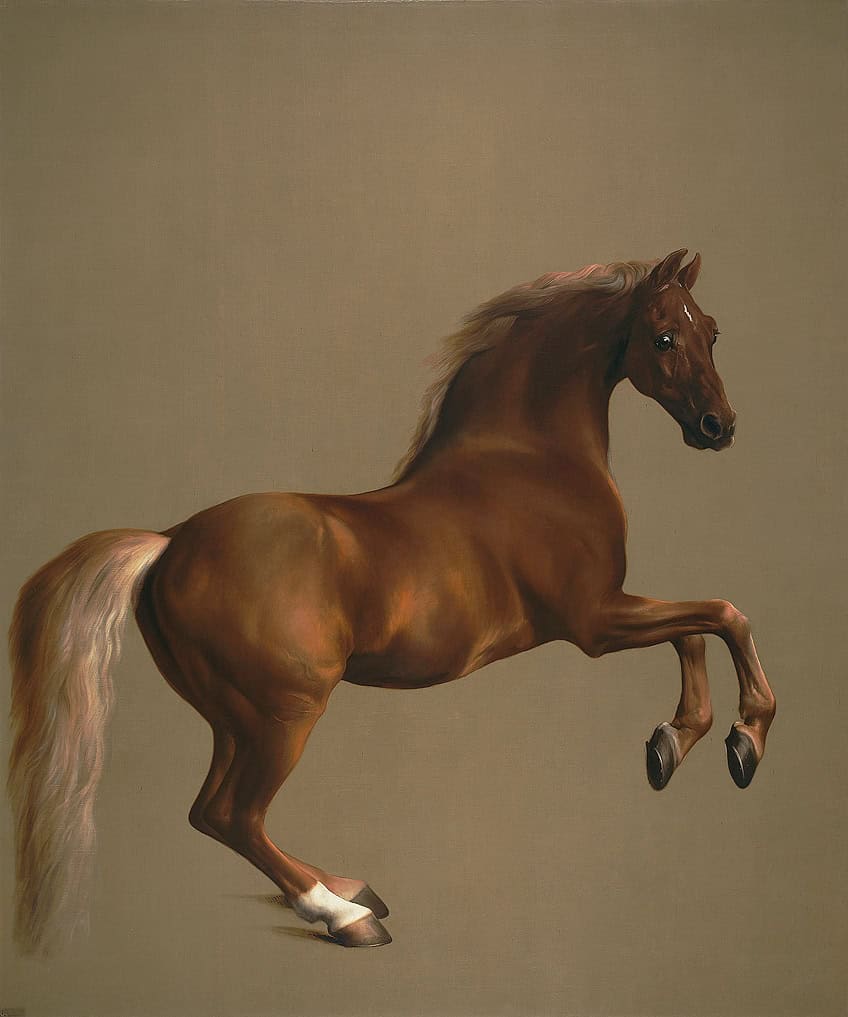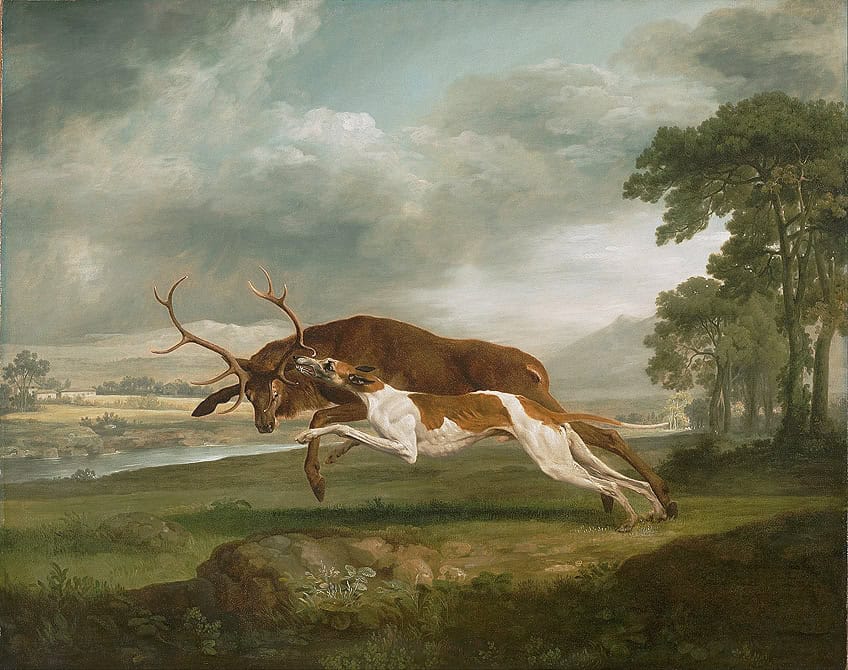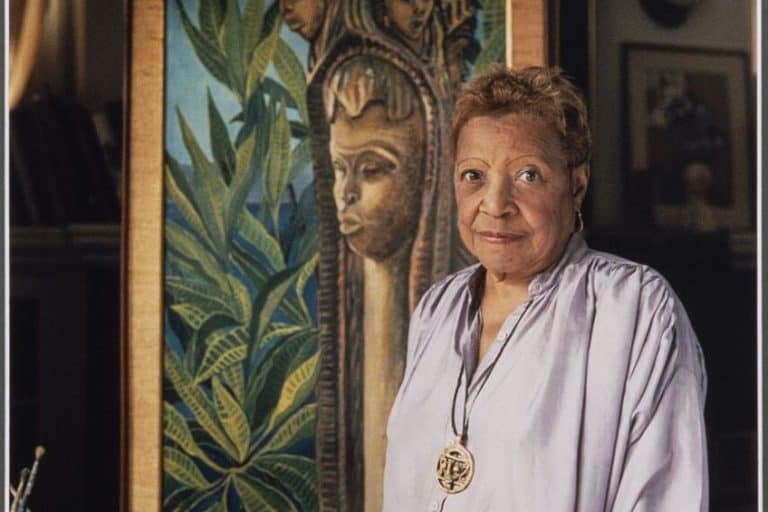George Stubbs – A Master of Equine Art
George Stubbs was an English painter renowned for his meticulous and anatomically precise depictions of horses. Celebrated as one of the foremost equine artists in history, Stubbs combined his artistic talent with a scientific approach to anatomy, producing works that are both artistically stunning and scientifically accurate. His most famous painting, Whistlejacket (1762), exemplifies his ability to capture the elegance and vitality of horses. Stubbs’ work extends beyond equestrian subjects to include rural scenes and portraits, showcasing his versatility and keen observational skills. His legacy endures in the world of animal painting, influencing generations of artists and continuing to captivate art enthusiasts worldwide.
Key Takeaways
- George Stubbs was a self-taught British painter renowned for his lifelike depictions of horses.
- Stubbs’s artistry was underpinned by his comprehensive study of animal anatomy.
- His legacy endures as a pivotal influence in the realm of British animal painting.
Early Life and Influence
| Birth | August 25, 1724 |
| Death | July 10, 1806 |
| Place of Birth | Liverpool, Lancashire, United Kingdom |
| Genre of Work | Animal painting and equine art |
George Stubbs was a distinguished British painter, born in Liverpool. As an artist, he is most recognized for his remarkable paintings of horses, which showcased his acute understanding of equine anatomy. Despite his limited formal training, Stubbs mastered painting through his independent study of anatomy and his meticulous dissections of horses. This self-directed learning process positioned him to emerge as a figure of significance within the British art world.

His extensive knowledge of animal anatomy imbued his works with an exceptional realism that set them apart from those of his contemporaries. Stubbs’s oeuvre is not restricted to animal paintings; he also explored history paintings and domestic scenes. His influence extended beyond his lifespan, contributing to his posthumous reputation as a key figure in British art.
He passed away in London on July 10, 1806, leaving behind a legacy that continued to shape the perceptions of equine artistry and animal painting.
Lincolnshire Origins
George Stubbs was born on August 25, 1724, in Liverpool, England, a bustling port city north of England. His father was involved in the trade of leather-dressing, a skill that provided the young Stubbs with a familiarization of animal musculature, an insight that would later become evident in his anatomical studies.

Pursuit of Artistic Education
Stubbs’s artistic pursuits began with a mix of informal and self-directed education. Disinclined to continue in his father’s trade, he sought to become a painter. Around the age of 16, despite initial reluctance, Stubbs’s father agreed to his apprenticeship with Hamlet Winstanley, a prominent artist in the region. However, the apprenticeship was short-lived, and Stubbs mostly became self-taught, developing his skills independently. Pivotal to his specialization was his focus on anatomy.
Stubbs moved to York, working in the York County Hospital, where he conducted meticulous dissections.
His dedication would crystallize in the publication of The Anatomy of the Horse. Stubbs’s unorthodox route to artistic education diverged from that of his contemporaries, many of whom traveled to Italy to learn from the Italian masters; instead, Stubbs honed his craft within England.
Initial Works and Reception
In the early phases of his career, Stubbs produced varied works. In the 1750s, he etched illustrations for Dr. John Burton’s Essay Towards a Complete New System of Midwifery. Yet, it was his portrayal of the equine form that garnered Stubbs early acclaim. His anatomical knowledge lent a realism to his portrayals that were less common amongst other well-known animal painters of the era, such as John Wootton, James Seymour, and Peter Tillemans.

Influence of Naturalism
George Stubbs was intrinsically linked to the emergence of naturalism in art during the 18th century. His diligence in studying animal anatomy, especially horses, set a new precedent for accuracy and naturalistic representation in art. This methodology contrasted with the period’s conventional romanticism, influencing both peers and future generations of painters.
Stubbs’s Comparative Anatomical Exposition of 1756 demonstrated his extensive anatomical investigation.
The event’s impact on both the fields of midwifery and art history showcases an integrative approach to his studies, bridging the gap between scientific inquiry and aesthetic expression. Stubbs’s work remains a testament to a unique blending of the technical with the artistic, a legacy still reflected in how animals are portrayed in art today.
Personal Life and Relationships
George Stubbs was an esteemed English painter renowned for his contributions to the depiction of animals, especially horses. Born in Liverpool, Stubbs was the son of a currier, and his personal life is interwoven with his deep dedication to art and anatomy. This section explores the people close to him throughout his life, his final years, and the enduring authenticity of his works.

Family and Associates
George Stubbs never married but had a significant relationship with Mary Spencer. They lived together at a farmhouse in Horkstow, a small village in Lincolnshire, England. Stubbs and Spencer shared a lifelong companionship until her death.
Later Years and Death
Stubbs continued to work well into his old age, residing in the countryside where he could focus on his artistic pursuits. In 1806, at the age of 81, George Stubbs passed away. He left behind a legacy as a pioneering artist reflecting the deep foundations of British art, especially in the field of animal anatomy and equine artistry.

Authenticity of Works
Stubbs worked with individuals such as Ozias Humphry, who were instrumental in creating plates and engravings for his anatomical works. Stubbs’s meticulous attention to anatomy influenced and guided the engravers in achieving accurate representations of his studies. Stubbs’s lifetime of dedication to his craft ensured that his authentic works continued to be regarded as a truthful representation of equine anatomy and art.
His paintings, like The Rhinoceros, are singularly recognized for their accuracy and artistry, which stands as a testament to his skill and dedication.
Major Works and Artistry
George Stubbs distinguished himself as a preeminent English painter, acclaimed for his depictions of horses and for his profound influence on British art. Employing his comprehensive understanding of equine anatomy, Stubbs produced works that exude an exceptional blend of technical skill and artistic refinement.

Innovative Equine Art
Stubbs is perhaps most celebrated for his revolutionary paintings of horses. Notable works such as Whistlejacket and Mares and Foals in a Landscape exemplify his ability to capture the elegance and dynamic form of his equine subjects.
His study, The Anatomy of the Horse, involved meticulous dissections and laid the foundational knowledge that enabled Stubb’s to render horses with unparalleled anatomical accuracy.
Expansion Beyond Horses
While renowned for his equine art, Stubbs extended his repertoire to include a variety of animals. His expertise in anatomy wasn’t restricted to horses as he masterfully depicted other creatures, such as dogs, lions, tigers, and even exotic animals seldom seen in England at the time. Lion Attacking a Horse and A Lion and a Tiger showcase his skillful representation of dramatic confrontations in the wild.

Techniques and Mediums
On the technical front, Stubbs was not only a masterful painter but also an adroit printmaker. He used oil paint and occasionally enamel on various supports, including canvas and even wood. His engravings and drawings demonstrate Stubbs’s dexterity and attention to detail, further underscoring the breadth of his artistic capabilities.
Notable Artworks to Know
George Stubbs is renowned for his exceptional paintings of animals, with a body of work that notably includes horses, dogs, and exotic wildlife. Each category is testament to his anatomical precision and artistic prowess.

Horses
- Whistlejacket (1762): A magnificent depiction of a rearing bay horse, celebrated for its realism and absence of background distraction.
- Gimcrack on Newmarket Heath, with a Trainer, a Stable-lad, and a Jockey (1765): Captures the thoroughbred Gimcrack with detailed anatomical accuracy.
Dogs
- A Couple of Foxhounds (1792): Showcases two foxhounds, conveying their physical characteristics with detailed artistry.

Exotic Wildlife
- Cheetah and Stag with Two Indians (1764 – 1765): Combines exotic animals with human figures, illustrating the foreign subjects that intrigued European audiences.
- A Lion Attacking a Horse (1768 – 1769): This dramatic work reflects Stubbs’s interest in natural history and the violence of the natural world.
Legacy and Impact
George Stubbs was instrumental in elevating animal portraiture to a fine art, receiving acclaim during his lifetime and leaving a lasting legacy that is still celebrated in collections worldwide.

Redefining Animal Portraiture
George Stubbs revolutionized animal portraiture by combining his deep understanding of anatomy with artistic skill. His meticulous attention to detail and ability to capture the essence of his subjects set a new standard for realism in depictions of animals, particularly horses, that was groundbreaking for the time.
Recognition and Patronage
Stubbs’ exceptional work secured him patronage from aristocratic circles, including famed sporting figures and royal patrons. His commissions often featured grooms, jockeys, and owners alongside their animals, exemplifying his ability to portray human-animal relationships.

Institutional Collections
Works by George Stubbs are held in prestigious collections, such as the National Gallery in London and the Mellon Collection at the Yale Center for British Art. His paintings are a testament to his skill and the high esteem in which he is held.
Posthumous Influence
After his death, Stubbs’s influence persisted, with art historians like Judy Egerton authoring texts that reassess and highlight his contributions to British art. His techniques and style informed and inspired subsequent generations of animal and sporting painters.

Cultural and Historical Significance
The artworks of Stubbs offer insights into 18th-century English society, sporting culture, and animal husbandry. He documented the relationship between humans and animals, showcasing the societal importance of the horse, and in doing so, painted a portrait of the era.
Legacy of George Stubbs Today
Today, Stubbs is recognized as a major figure in British art. Modern appreciation for Stubbs’s work can be traced back to the mid-20th century, when collectors like Paul Mellon reinvigorated interest in his art, positioning Stubbs as not only a Lancashire painter but an artist of national importance.

George Stubbs’ contributions to art and science remain unparalleled, cementing his status as a pioneering figure in the portrayal of animals, particularly horses. His unique blend of artistic mastery and scientific rigor produced works that have stood the test of time, continuing to be celebrated for their precision and beauty. Stubbs’ legacy endures not only through his captivating paintings but also through his influence on subsequent generations of artists and naturalists. His ability to merge art with anatomical accuracy has left an indelible mark on the art world, ensuring that his work will be admired and studied for years to come.
Frequently Asked Questions
What Led to the Death of George Stubbs?
George Stubbs passed away on July 10, 1806. The cause of his death is not widely documented in readily available sources, but considering his lifespan was typical for his era, it could be attributed to natural causes associated with aging.
What Are Some Notable Horse Paintings by George Stubbs?
Some of Stubbs’s most acclaimed horse paintings include Whistlejacket (c. 1762), which showcases a rearing stallion in near life-size form, and Gimcrack on Newmarket Heath, with a Trainer, a Stable-lad, and a Jockey (c. 1765), highlighting the famous racing horse Gimcrack. His painting, Mares and Foals in a River Landscape (c. 1763 – 1768), also remains a testament to his commitment to equine subjects.
How Do Experts Identify a Signature by George Stubbs?
Experts identify a signature by George Stubbs through examination of his distinctive script, often located on the lower part of his paintings. The signature varies slightly across his works due to changes over time, but generally features clear, legible lettering. Authenticating a Stubbs signature involves cross-referencing with authenticated examples and consideration of the artwork’s provenance and stylistic attributes.
Isabella studied at the University of Cape Town in South Africa and graduated with a Bachelor of Arts majoring in English Literature & Language and Psychology. Throughout her undergraduate years, she took Art History as an additional subject and absolutely loved it. Building on from her art history knowledge that began in high school, art has always been a particular area of fascination for her. From learning about artworks previously unknown to her, or sharpening her existing understanding of specific works, the ability to continue learning within this interesting sphere excites her greatly.
Her focal points of interest in art history encompass profiling specific artists and art movements, as it is these areas where she is able to really dig deep into the rich narrative of the art world. Additionally, she particularly enjoys exploring the different artistic styles of the 20th century, as well as the important impact that female artists have had on the development of art history.
Learn more about Isabella Meyer and the Art in Context Team.
Cite this Article
Isabella, Meyer, “George Stubbs – A Master of Equine Art.” Art in Context. May 21, 2024. URL: https://artincontext.org/george-stubbs/
Meyer, I. (2024, 21 May). George Stubbs – A Master of Equine Art. Art in Context. https://artincontext.org/george-stubbs/
Meyer, Isabella. “George Stubbs – A Master of Equine Art.” Art in Context, May 21, 2024. https://artincontext.org/george-stubbs/.











